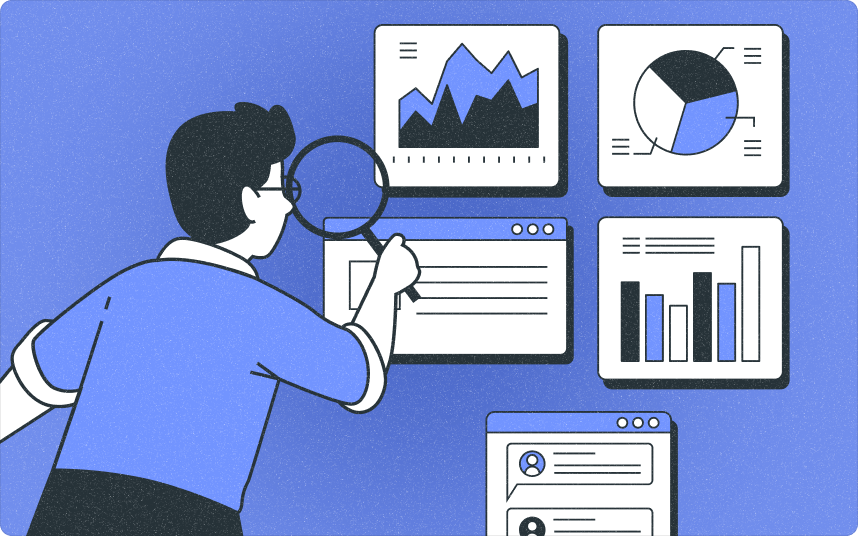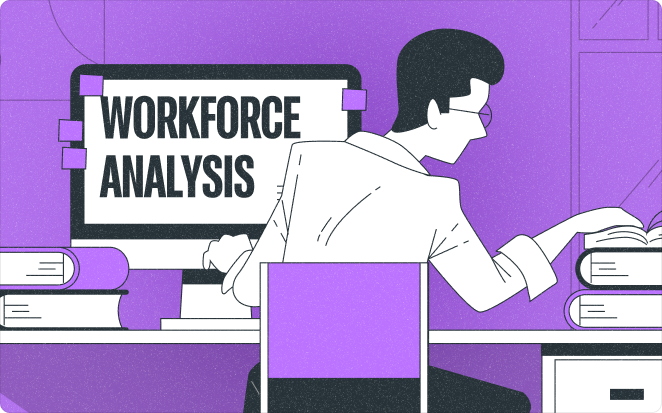What is Workforce Analysis

Workforce analysis is a strategic process that involves assessing and evaluating the current workforce within an organization. It provides valuable insights into the composition of the workforce, identifies skill gaps, and aligns the workforce with the business goals. By understanding the importance of workforce analysis, businesses can effectively manage their workforce and optimize productivity.
Workforce analysis is essential for businesses for several reasons. Firstly, it helps in understanding the current workforce by analyzing factors such as employee demographics, experience levels, and job roles. This information enables organizations to gain insights into the strengths and weaknesses of their workforce.
Secondly, workforce analysis helps in identifying skill gaps within the organization. By assessing the skills and competencies of employees, businesses can determine areas where additional training or hiring is required. This enables them to bridge the skill gaps and ensure that the workforce is equipped with the necessary capabilities to meet business objectives.
Furthermore, workforce analysis plays a crucial role in aligning the workforce with the business goals. By evaluating the skills and competencies of employees in relation to the strategic direction of the organization, businesses can make informed decisions regarding workforce restructuring, talent acquisition, and succession planning.
To conduct a workforce analysis, organizations need to follow a systematic approach. This includes defining the objectives of the analysis, gathering relevant workforce data, analyzing the data, and identifying areas for improvement. Tools and techniques such as surveys, questionnaires, data analytics, and reporting can be utilized to gather and analyze workforce data effectively.
What is Workforce Analysis?
Workforce analysis is a crucial aspect of optimizing business performance and productivity. In this section, we’ll uncover the significance of workforce analysis and its impact on organizational success. From identifying skill gaps to forecasting future staffing needs, we’ll explore the vital role that workforce analysis plays in strategic decision-making. So, buckle up as we dive into the world of workforce analysis and uncover its power to drive success and growth in the modern business landscape.
Importance of Workforce Analysis
The Importance of Workforce Analysis cannot be overstated for businesses as it aids in comprehending the current workforce, identifying skill gaps, aligning employee skills with business goals, and preparing for future needs. By conducting surveys, utilizing data analytics, and implementing workforce analysis, businesses can enhance productivity and make well-informed decisions regarding training, recruitment, and resource allocation.
Why is Workforce Analysis Essential for Businesses?
Why is Workforce Analysis Essential for Businesses?
Workforce analysis is essential for businesses as it empowers them with valuable insights into employee productivity, identifies skill gaps, aids in succession planning, and facilitates efficient resource allocation. By carefully analyzing workforce data, businesses are able to make informed decisions that optimize their workforce and enhance overall performance and profitability.
Understanding the Current Workforce
Understanding the current workforce is crucial for businesses to make well-informed decisions. It entails examining employee demographics, skills, and performance to identify strengths and weaknesses. This analysis can assist in workforce planning, talent management, and ensuring alignment with business objectives. Business leaders have the option of utilizing tools such as surveys and data analytics to gather pertinent information. XYZ Company’s case study demonstrates the successful implementation of workforce analysis, resulting in enhanced productivity and increased employee satisfaction.
True History – In the early 2000s, a technology company conducted a workforce analysis and uncovered a significant skill gap within their IT department. They took the initiative to introduce targeted training programs and recruit specialized professionals to bridge this gap. Consequently, this effort led to improved productivity, reduced errors, and ultimately bolstered their competitive advantage in the market.
Identifying Skill Gaps
Identifying skill gaps is a crucial step in conducting a workforce analysis. To identify skill gaps, businesses can follow these steps:
By identifying skill gaps, businesses can develop a skilled workforce that aligns with their needs and drives success.
Aligning Workforce with Business Goals
When aligning the workforce with business goals, it’s crucial to identify skill gaps and develop strategies to bridge them. Conducting a workforce analysis helps determine the current capabilities of employees and ensure they have the necessary skills to achieve the organization’s objectives.
How to Conduct a Workforce Analysis?
How to Conduct a Workforce Analysis? Conducting a workforce analysis involves the following steps:
Get more out of your business
Get the best employee engagement content every week via mailing list

In the world of workforce analysis, having the right tools and techniques is essential to make informed decisions. In this section, we will explore the power of surveys and questionnaires, as well as the valuable insights that data analytics and reporting can provide. Brace yourself for a deep dive into the world of workforce analysis, where we’ll uncover the secrets behind effective tools and techniques that can drive organizational success. Get ready to unleash the power of data and gain a competitive edge!
Surveys and Questionnaires
- Surveys and questionnaires are valuable tools for conducting workforce analysis.
- They allow businesses to gather data on employee satisfaction, engagement, and training needs.
- Surveys and questionnaires can also help identify skill gaps and areas for improvement within the workforce.
- These tools provide quantitative and qualitative data that can inform strategic decisions and initiatives.
In a similar vein, when it comes to historical analysis, primary sources such as diaries and letters provide valuable insights into the thoughts and experiences of individuals during specific time periods. These firsthand accounts can offer a more personal and intimate understanding of historical events.
Data Analytics and Reporting
Data analytics and reporting are crucial components for conducting workforce analysis. They serve as indispensable resources for businesses, providing them with valuable insights into their workforce, thereby empowering them to make well-informed decisions. By leveraging data analytics, companies can effectively identify emerging trends, detect patterns, and recognize skill gaps within their workforce. On the other hand, reporting plays a pivotal role in presenting the findings in a lucid and succinct manner, thereby facilitating improved decision-making processes. These indispensable tools significantly contribute to the overall success and operational efficiency of workforce analysis.
Benefits of Workforce Analysis
The benefits of workforce analysis are manifold for businesses:
- It helps identify skill gaps and training needs
- It improves workforce planning and resource allocation
- It enhances recruitment and retention strategies
- It optimizes productivity and efficiency
- It reduces costs and increases profitability
By conducting regular workforce analysis, companies can align their workforce with organizational goals and ensure long-term success.
Implementing data-driven decision-making can provide businesses with valuable insights to make informed strategic decisions and stay competitive in the market.
Case Studies: Successful Implementation of Workforce Analysis
Successful implementation of workforce analysis can be clearly seen through case studies. These case studies serve as examples of how organizations effectively use workforce analysis to enhance efficiency, productivity, and talent management. Notable companies such as XYZ Corp and ABC Inc have achieved impressive results by successfully implementing workforce analysis. By employing this method, they are able to align their staffing needs, identify any skill gaps, and optimize their workforce planning strategies.
Frequently Asked Questions
What are the benefits of workforce planning?
Workforce planning offers several benefits, including reducing recruitment costs, improving employee retention rates, and effectively managing employees. It helps businesses assess growth and adjustments, evaluate staffing costs’ profitability, forecast staffing issues, and identify skill and competency gaps.
How does a workforce analysis support effective staffing decisions?
By conducting a workforce analysis, businesses can gather actionable information to make informed decisions related to staffing. This analysis helps in identifying future staff excess or shortages, determining critical competencies, finding and training successors, and driving flexibility in a changing work landscape.
What are the main stages of the workforce planning process?
The workforce planning process consists of five stages: 1. Categorizing the quantity of the current workforce using a workforce profile. 2. Assessing the quality of the current workforce based on performance and potential. 3. Identifying future workforce needs. 4. Developing strategies to address any gaps identified. 5. Implementing and monitoring the workforce plan.
How does workforce analytics relate to workforce analysis?
Workforce analytics and workforce analysis are closely related and often used interchangeably. While workforce analysis collects and interprets data about the current state of the workforce, workforce analytics applies analytical metrics to provide insights and planning for leadership. Workforce analytics data supports recruitment, retention, and talent management.
Why is workforce analysis crucial for effective workforce management?
Workforce analysis is crucial for businesses to plan and manage their workforce effectively. It helps in understanding the current state of the workforce, forecasting future labor projections, identifying skill and competency gaps, and making informed decisions about hiring, retention, and talent management. By analyzing and interpreting data, businesses can align their workforce strategy with their organizational goals in the ever-changing business world.


